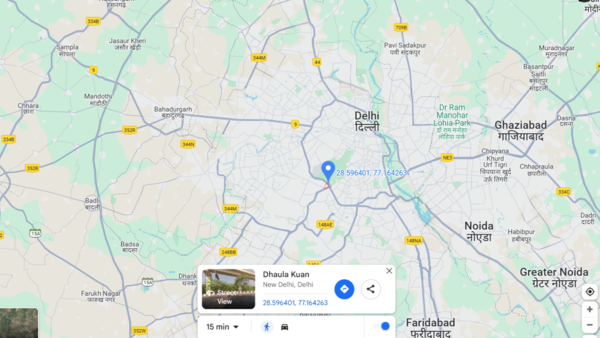NEW DELHI: Residents of Delhi-NCR and several parts of northern India were jolted awake early Monday morning as strong tremors shook high-rise buildings, prompting many to rush outdoors. The earthquake, measuring 4.0 on the Richter scale, struck at 5:36 AM IST with its epicentre located within Delhi’s Dhaula Kuan, according to the National Centre for Seismology (NCS).
Though a 4.0-magnitude quake is considered moderate, its impact felt stronger than usual because of its shallow depth and close proximity to densely populated areas. Earthquakes with epicentres within a city result in more intense shaking since seismic waves travel a shorter distance before reaching structures, amplifying the tremors.
Delhi, which falls in Seismic Zone IV, is prone to moderate-to-strong earthquakes, making localised tremors more pronounced as the. Experts noted that buildings, particularly high-rises, sway more due to their design, increasing the perceived intensity of shaking.
Authorities have reported no major damage or casualties, but the sudden tremors sparked concern among residents. Seismologists continue to monitor aftershocks and have advised citizens to stay informed about earthquake preparedness measures.
See how close were you from the epicenter: Dhaula Kuan

Why did the tremors feel so strong?
- Epicentre within Delhi: Since the earthquake originated beneath the city, seismic waves had less distance to travel, making the tremors feel more intense.
- Shallow depth: Earthquakes that occur closer to the Earth’s surface generate stronger shaking compared to deeper quakes of similar magnitude.
- Urban infrastructure: High-rise buildings in Delhi, Noida, and Ghaziabad sway more due to their height, amplifying the sensation of shaking.
- Soil composition: Soft alluvial soil in some areas of Delhi can amplify seismic waves, further intensifying the tremors.
Why did the earthquake occur?
Delhi sits near active fault lines, including the Delhi-Hardwar Ridge and the Mahendragarh-Dehradun fault, making it prone to moderate seismic activity. The tremors were caused by tectonic plate movement along one of these fault lines, where stress builds up over time and is eventually released as an earthquake.
